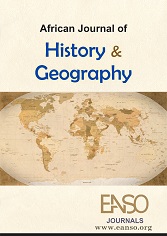Schooling and New Representations in Kabiyè Land from 1926 to 2004
Résumé
Introduced in Kabiyè Land in 1926 and then popularised in a context of domination, the school has become the model for education and the place where new representations are disseminated. This school proceeded, firstly, by separating the child from the family, from whom it stole most of his prerogatives, and then by dividing individuals, families, communities and ethnic groups, to which it however allowed to communicate by the medium of the foreign language, French. Borrowings from French break down the Kabiyè language discourse and prevent it from transmitting the cultural values which it constitute the vehicle. The fact that Kabiyè people adopt French, which is different from Kabiyè, their mother tongue, is a sign of a gap, a cleavage. The initiation rites to which the educated are subjected deepen the breach separating them from this still illiterate multitude, whom they henceforth treat with disdain
##plugins.generic.usageStats.downloads##
Références
Assima-Kpatcha Essoham, M., Marguerat, Y., & Sebald, P. (2011). L’éducation sous domination coloniale. In N. L. Gayibor (Ed.), Histoire des Togolais. Des origines aux années 1960. Tome 4: Le refus de l’ordre colonial (pp. 101-159). Presses de l'UL.
Bafei, A. (2017). Scolarisation et changement de mentalités au Nord-Togo (1922-2003) [Doctoral thesis, Université de Lomé].
Bafei, A. (2010). L’œuvre scolaire de la Mission catholique en pays kabiyè (1931-1956) [Master's thesis, Université de Kara].
Cornevin, R. (1988). Le Togo: Des origines à nos jours. Académie des Sciences d’outre-mer.
Cornevin, R. (1959). Histoire du Togo. Éditions Berger-Levrault.
Desjeux, D. (1991). Le sens de l’autre. Stratégies, réseaux et cultures en situation interculturelle. UNESCO/ICA.
Erny, P. (1987). L’enfant et son milieu en Afrique noire. Éditions L’Harmattan.
French Government. (1957). Annual report of the French government to the United Nations General Assembly on the administration of Togo placed under French trusteeship. United Nations.
Gnarou Sama, B. (1999). Histoire de la ville de Kara des origines à nos jours [Master's thesis, Université du Bénin].
Kakou Courier, N. (2007). Conquêtes coloniales et intégration des peuples: Cas des Kabiyè au Togo (1898-1940). L'Harmattan.
Kéyéwa, G. O. (1997). Vie, énergie spirituelle et moralité en pays Kabiyè (Togo). Éditions L'Harmattan.
Lange, M.-F. (1998). L’école au Togo: Processus de scolarisation et institution de l’école en Afrique. Éditions Karthala.
Ministère De L'éducation Nationale. (1975). La réforme de l’enseignement au Togo (forme abrégée). Lomé: 37 p.
Napala, K. (2007). Les forces religieuses et les rapports interreligieux au Togo sous la colonisation française: 1914-1960 [Doctoral thesis, Université Michel de Montaigne-Bordeaux 3].
Possoli, P. (2007). Le Collège Chaminade de Kara (1956-2006) [Research report, Université de Kara].
Ricard, A. (1987). Naissance du roman africain: Félix Couchoro (1900-1968). Éditions Présence Africaine.
Tchassim, K. (2006). L’image du « Togolais nouveau » dans l’œuvre romanesque de Félix Couchoro [Doctoral thesis, Université de Lomé].
Togo-Presse. (2004, January 26). [Title of article]. Togo-Presse.
VERDIER, R. (1982). Le pays Kabiyè, cité des dieux, cité des hommes. Éditions Karthala.
Yekple, A. L. (2009). Crise et réforme de l’enseignement supérieur au Togo (1965-2007) [Master's thesis, Université de Lomé].
Direction Générale De La Planification De L’éducation. (1975). Statistiques scolaires du Togo: 1966-1967, 1971-1972 et 2004-2005. Division de la Planification et des Études/DES-MESR.
Copyright (c) 2024 Abaï Bafei, PhD, Essolizam Dadja, PhD

Ce travail est disponible sous la licence Creative Commons Attribution 4.0 International .




























